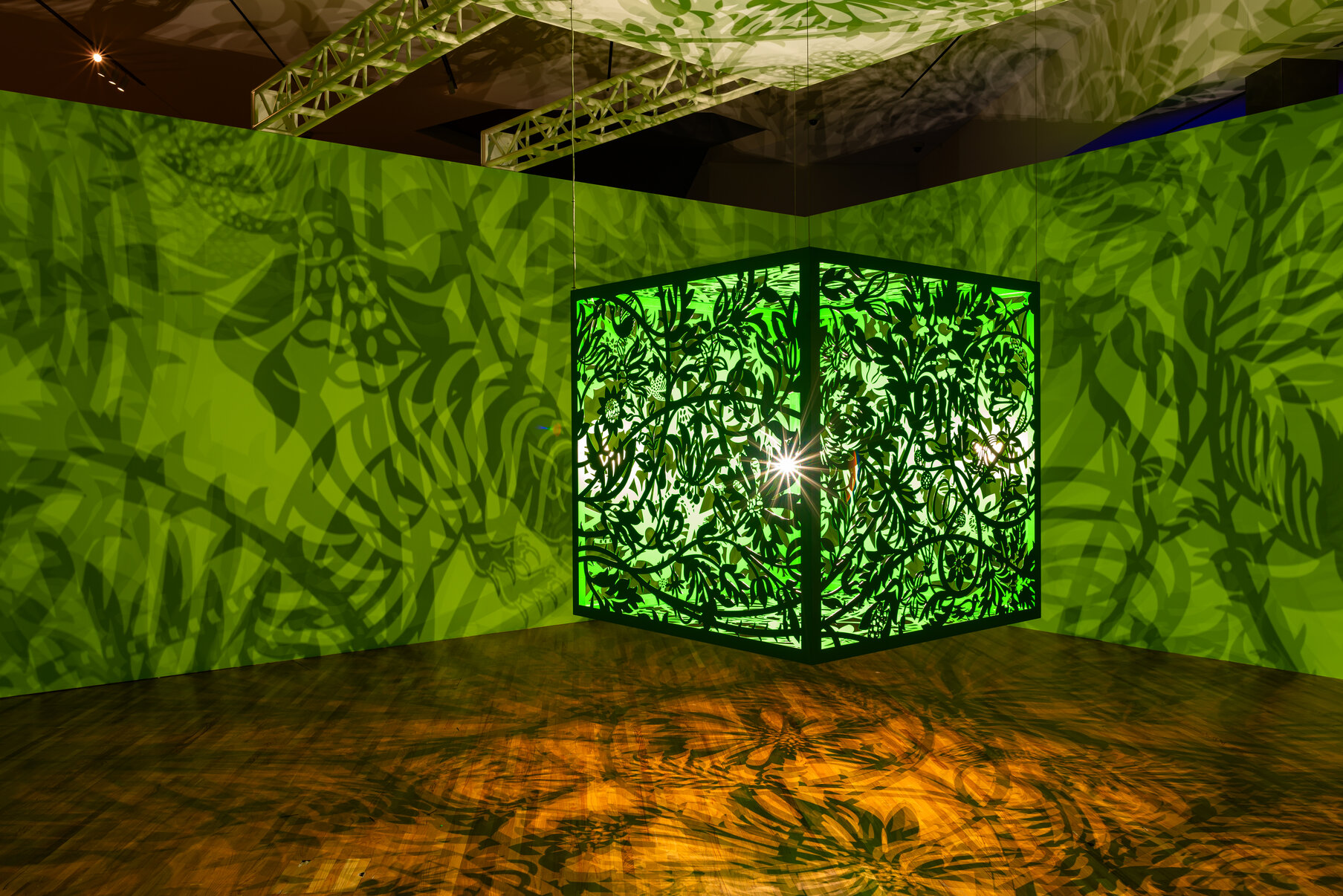by Emese Krunák-Hajagos
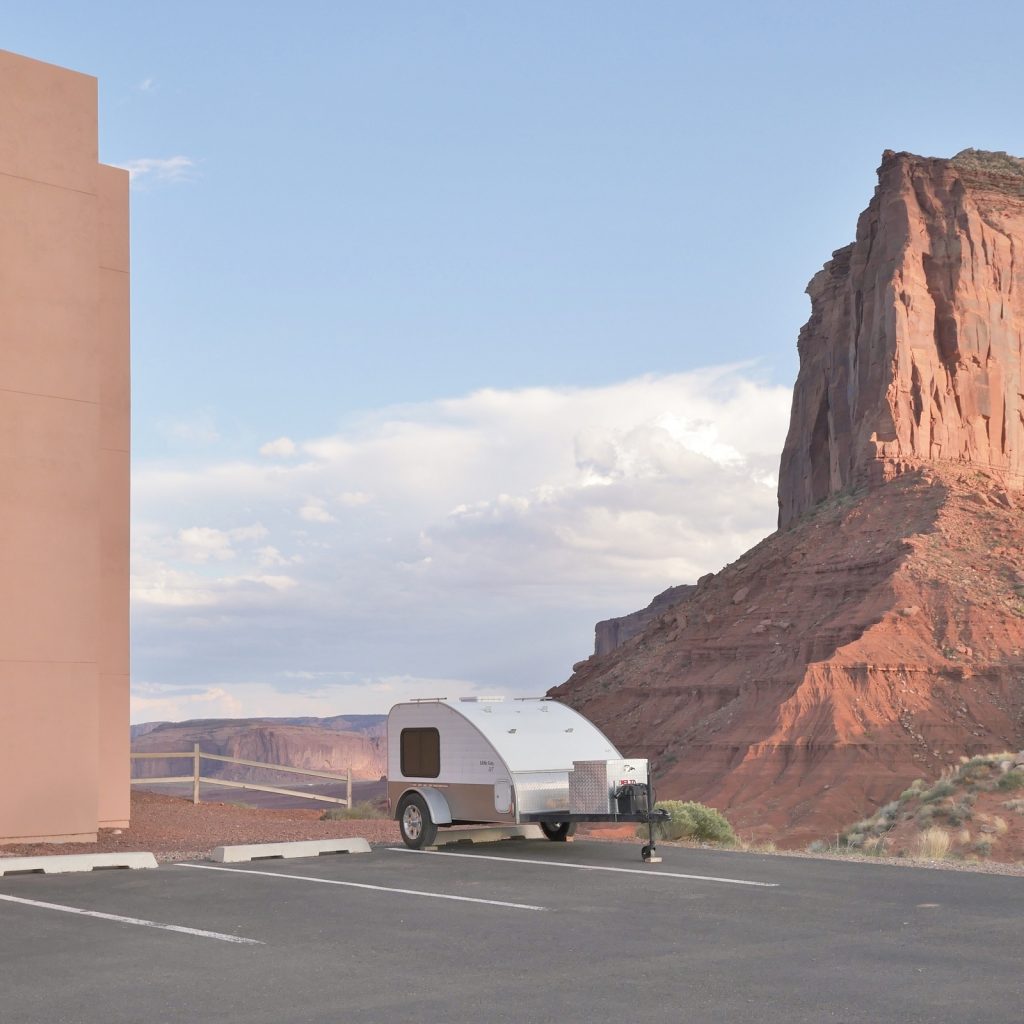
Solitude surrounds the guest when entering Emmanuel Monzon’s exhibition at Robert Kananaj Gallery in Toronto. All the photographs seem similar at first glance in their quiet compositions and monochrome colours. Taking a closer look, one recognizes their nuances – and becomes mesmerised by their magical beauty. They radiate an ephemeral, almost surreal tension that captivates the viewer.
Monzon, a French born artist graduated from the Académie des Beaux-Arts in Paris and started his career with painting, and his painterly values still dominate his photographs. They look like watercolours and are printed on watercolour paper. Moving to Seattle was a turning point in his life. As he said, “I had the feeling that my work could only be photographic for this space, which creates its own mythology.” Indeed, it did, as Monzon’s photographs are very unique in their themes, depictions and colouring.
Monzon travels a lot in the American West, around the deserts where urban settlements, surrounded by suburbs, meet industrial areas and a no-man’s lands of rocks and sand. All his images are entirely devoid of humans. Some suggest human occupation such as Urban Sprawl 167, with a parked trailer, parking spots, a strong outline of a building. The grey surface of asphalt ends abruptly at a rock and the landscape takes over. The pervasive colour is burnt sand – the whole area is covered with it, even the building seems to be made from bricks carved from the rock. There are traces of people, the neon sign at Jazzercise is on, there is a light inside the shop and in the building in the background, cars are in the parking lot – but not a single person or animal is around (Urban Sprawl 165). The only living thing is the large cactus, standing in front of a traffic light. The light has turned green – but for whom. Who had to stop and why at the stop sign (Urban Sprawl 164) and walk over the pedestrian crossing? As far as the eye can see there is nothing in that flat landscape that surrounds a sand rock – except emptiness. One can almost hear the moan of the soil cracked by heat, beaten and barren, or the silent cry of a lonely tree fenced out of the garden behind it (Urban Sprawl 165).
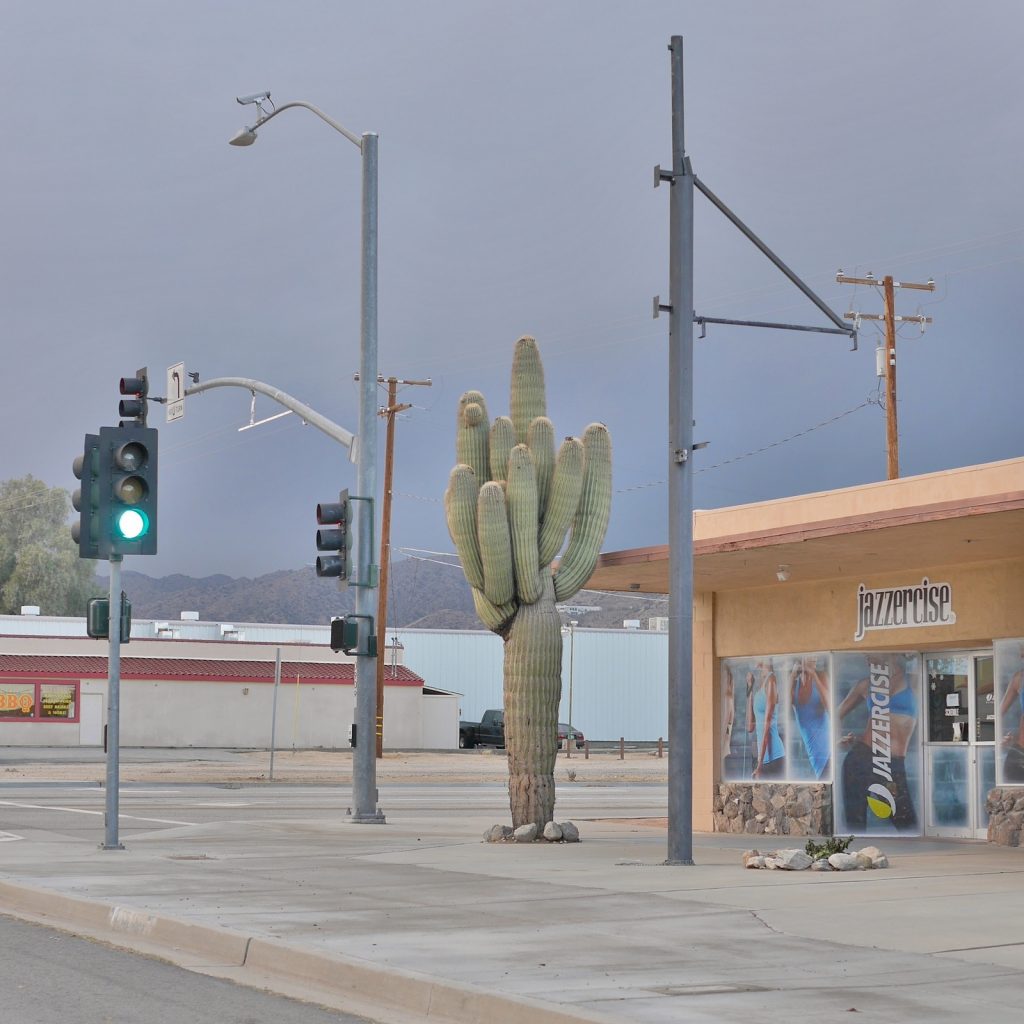
Where are these places? Where are the people and animals? Even the shadows are not there. What’s happening? Did the people leave or is this a post-apocalyptic world? Maybe none of these. Rather I think it is a landscape with its “own mythology.” Monzon captures moments that can best be described as “in-between” moments, in which the activities of the town stopped for the day and haven’t started for a new one, where everyone sleeps or hides, where the place is left by itself.
Monzon’s landscapes are heavily modified, desecrated even destroyed by our hunger for expansion, making the land banal and ugly. Still we can’t deny the beauty in these photographs, but such a cruel beauty it is. As Monzon stated in his latest interview, “the American natural landscape has redefined this space and has become itself a ‘non-place’. The transition from one site to the next: You have arrived and at the same time you have never left.” Whatever this place is, it is not the place you want to be. French anthropologist Marc Augè defined “non-place” as a place of anonymous solitude, like airports, motorways, parking lots where people meet in an illusion that they can be socially engaged, but actually it is not possible. Monzon photographs depict these “non-places” in their true nature: as timeless places where there are no sounds, only emptiness.
However beautifully depicted, this emptiness is sad, even painful. Urban Sprawl 162 portrays a dinosaur figure that would be more appropriately found in Disneyland. In its poor surroundings he almost smiles rather than snarls, his maker must be an amateur. He is definitely in limbo here, no one looks at him, he is totally isolated and his being is meaningless.
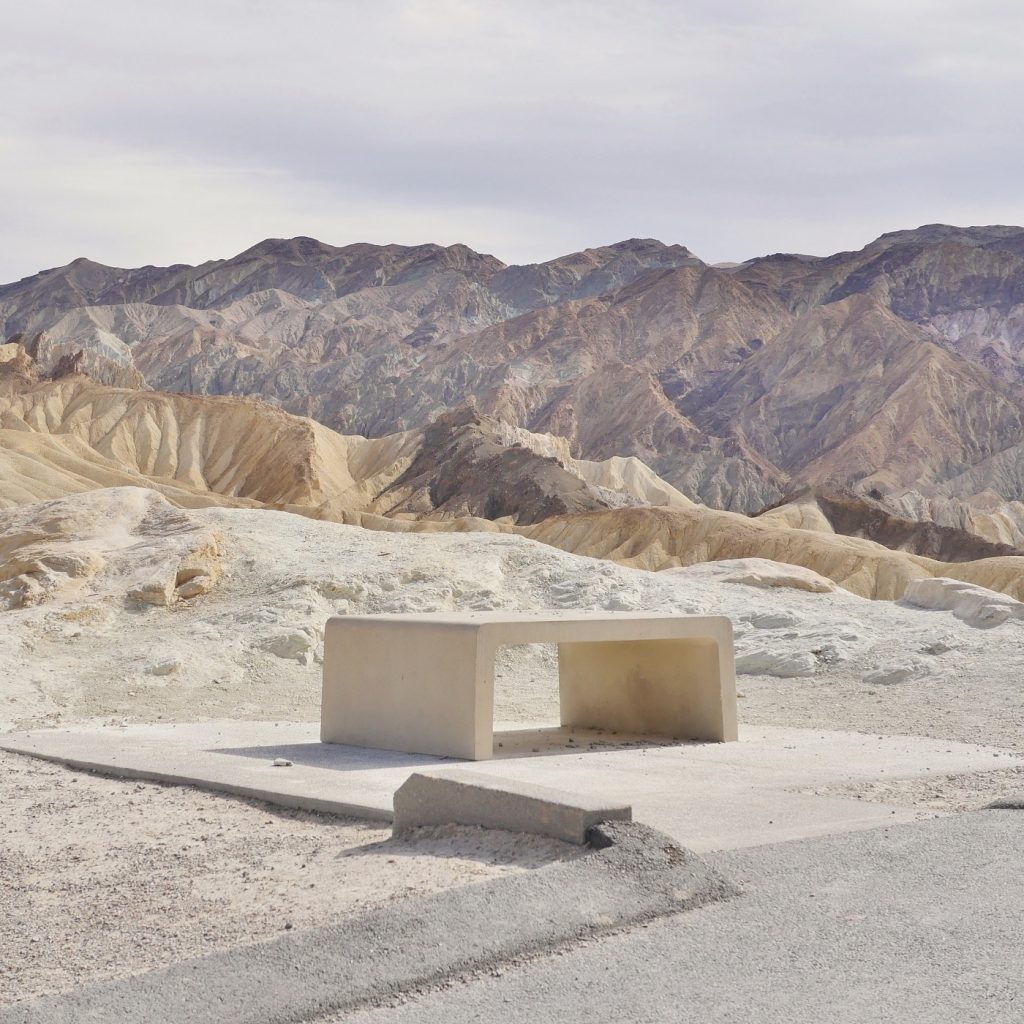
Urban Sprawl 182 reminds me of an ancient outdoor shrine in an old landscape, something like Stonehenge. Surrounded by ageless landscape there is an altar. That altar is made of concrete and an asphalt road leads to it. What kind of cruel joke is this? However, there is still a spiritual power surge about it. What God is worshipped here? Will he or she lift or destroy the soul? There is something sacramental in this uneasy emptiness and the unconscious mind resonates with the spirits occupying the shimmering whiteness of this place. Monzon captures the moment of eternity and the eternity in the moment at the same time. His photographs show a void, a void that can not be filled.
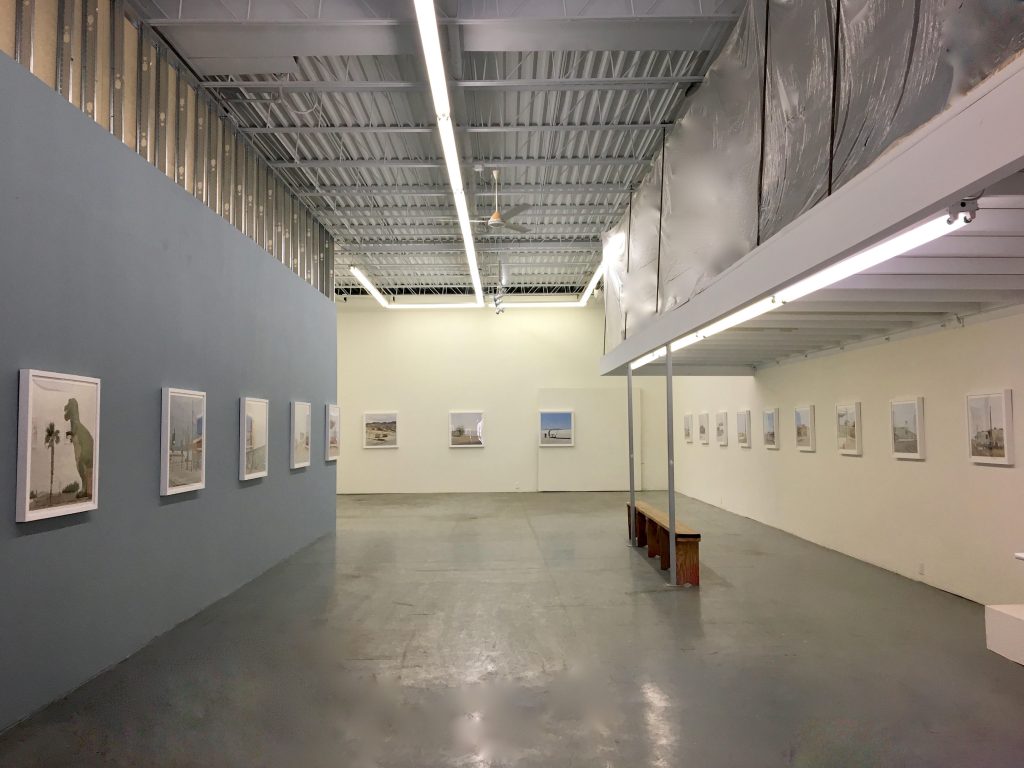
Images are all 30 x 30 inches, digital print on Canson Arches Infinity watercolor paper (acid free), framed, Limited edition (1/3 ed of 3 +1AP), 2018, courtesy of Robert Kananaj Gallery and the artist.
*Exhibition information: Emmanuel Monzon, Urban Sprawl Emptiness, March 16 -May 18, 2019, Robert Kananaj Gallery, 172 St Helens Avenue, Toronto.
